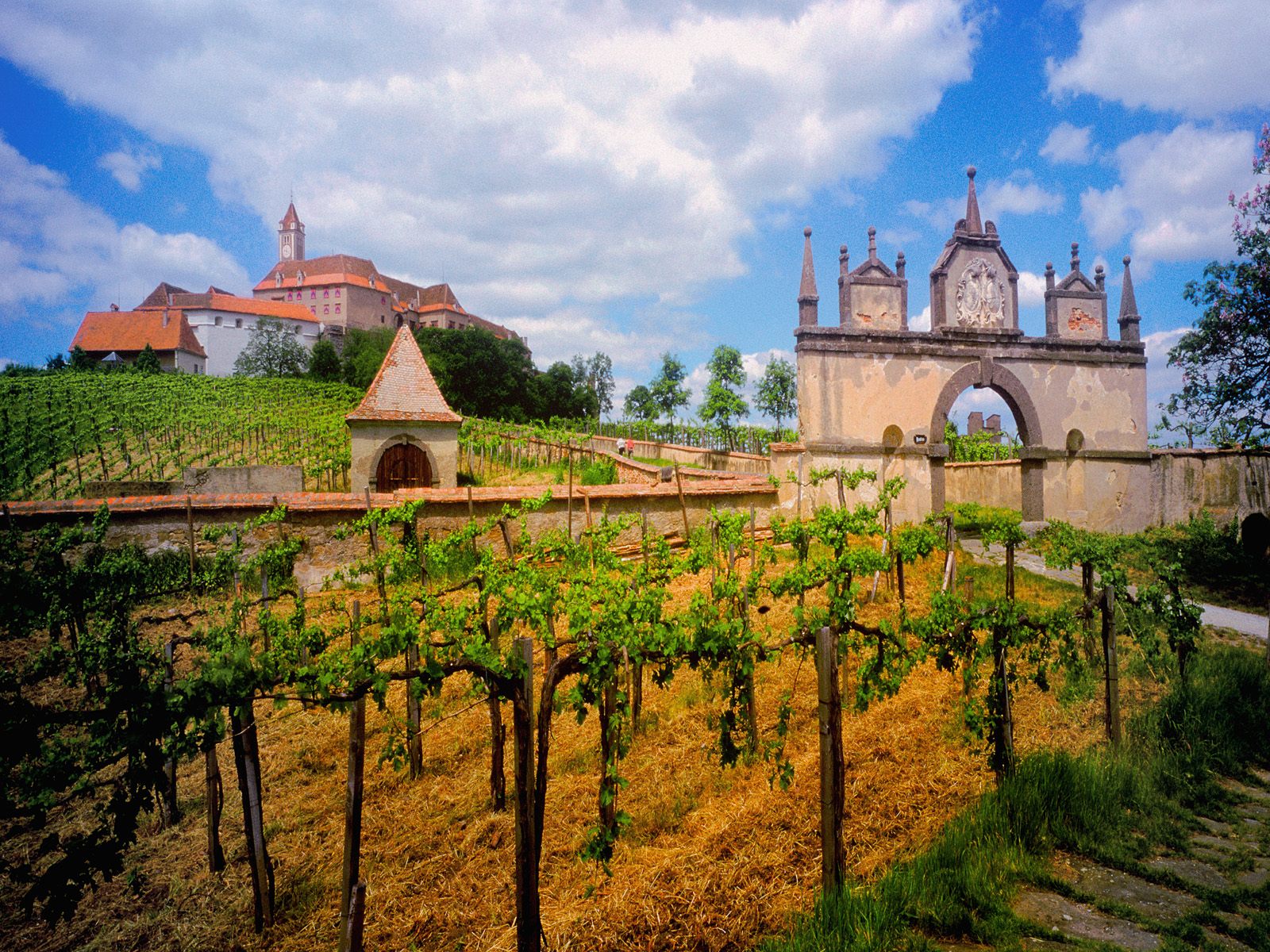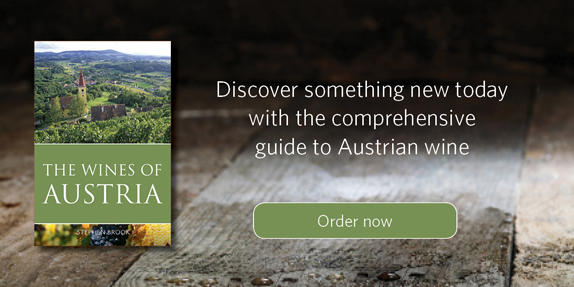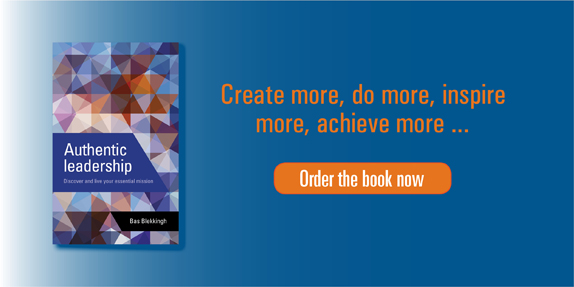Author Archives: Catherine Holdsworth
What about the customer experience?
18 November 2015 by Catherine Holdsworth in Business and finance, Implementing ISO 9001:2015
Susannah Clarke, co-author of Implementing ISO 9001:2015, asks whether the principles of DFMA are enough if customer delight gets overlooked along the way.
I’m working on an interesting project in the construction sector at the moment, looking at how and what this sector can learn from the automotive and aerospace industry and the standards they now achieve, particularly related to Design for Manufacture and Assembly (DFMA).
One area of interest is offsite construction, where modules are designed and built offsite and then transported to the site. The theory is that this approach will drive standardisation, lower costs and reduce the time to build/construct. Of course achieving these goals depends much on the original design being robust and appropriate for offsite construction – it’s got to fit together seamlessly on arrival with the other components.

The importance of this was brought home to me a couple of weeks ago when I received a new desk for my home office. I had ordered it from a store for whom I feel a strong loyalty – many people do; it’s that kind of place. Therefore I had certain expectations: it would be high quality; it would look good; it would meet my needs with drawers, good access and easy sitting position, space to spread my work out on; it would arrive assembled. This is not a flat-pack store, so I was initially quite taken aback when the charming delivery men brought a very flat set of boxes into my house. I was not delighted!
However, undeterred, I set about with my toolbox, the instructions and a willing helper.
I’m going to spare you the photos of me, head in hands and manically waving my screwdriver about.
I’m not even going to talk you through the one afternoon and three evenings that it took me to get the desk completely assembled, although if you want a laugh and a good idea of the challenges I faced, watch the video below of Stephen Fry tackling flat pack furniture assembly (warning: there is some ‘choice’ language!).
I’m going to focus, instead, on what I learned, since it provides valuable insights for suppliers in terms of maximising customer delight.
- Set clear expectations – if you are supplying something which is not assembled, the customer needs to know.
- Instructions are great when they’re pictures, but not when they are too small. I was given an A5 booklet and the pictures were half A5.
- Components need clear labelling so that the customer can identify them easily, particularly when some items are very similar. I was struggling to tell a side panel from a back panel.
- All nuts/bolts/screws/fixings need not only to be itemised but linking them to a component part also helps the customer. I regularly found myself asking, “Is this the right screw for the drawer or is it meant to connect the legs?”
- Reduce the number of parts to make it simple for the customer. I had more desk pieces, drawer parts, handles, drawer runners, side panels, modesty panels and legs than I knew what to do with and enough fixings to open a local hardware store!
Whoever plans the components, needs to mistake-proof it for the customer (assembler). I spent many hours trying to align the drawer runners with the pre-punched holes in the pedestal sides, unable to work out which hole was meant to match which. It was almost impossible.

I’m assuming that the manufacturer was able to use the DFM principles. Each part individually looked fairly simple and therefore, one had a sense that it could be mass produced easily. But how did my desk compare to the principles of DFA?
True, the store had removed any costs it would have incurred by assembling the desk itself, and was able to pass these savings on to me, the customer. But, false, it had not minimised the number of assembly operations; in fact it had a vast number of steps, components and fixings.
I’m certain that whoever designed this desk was talented; now it’s finally up I’m really pleased with it in terms of both appearance and function. The manufacturer is obviously technically capable since all the parts did go together in the end. But they forgot one crucial aspect – customer experience. I don’t think this retailer had an eye on its customer; they don’t seem to have envisaged how I would feel on receiving my box of panels, screws and hard-to-follow instructions. I might hesitate before buying one of their products again.
To order Implementing ISO 9001:2015 by Jan Gillett, Paul Simpson and Susannah Clarke from Infinite Ideas, please email info@infideas.com
The Infinite Ideas interview with Stephen Brook
9 November 2015 by Catherine Holdsworth in Classic Wine Library, Wine and spirits
Prolific wine writer Stephen Brook, author of The wines of Austria had a quick chat about his favourite subject.
Perhaps the best known Austrian grapes are Grüner Veltliner and Blaufränkisch. What are the characteristics of these grapes that make them best suited to be grown in Austria?
Gruner Veltliner is wonderfully versatile. It can produce crisp, refreshing wines for early drinking, and at the other end of the spectrum, powerful mineral wines that can age for decades, developing great complexity. The variety is grown in the Czech Republic, California, and New Zealand, but it rarely shows the typicity of the Austrian originals.
Much the same is true of Blaufrankisch. It can be produced as a simple, fresh red, rather like Beaujolais, or as a full-bodied, often quite oaky red with structure and weight. It’s a wine that should show good acidity, making it an ideal and versatile wine with food. It is also grown in Germany, under the name Lemberger, But it thrives best in eastern Austria.
What have been the biggest changes in the production of Austrian wine in recent years?
White wines, dry and sweet, have always been outstanding in Austria, but the real progress has been with red wines, which were frankly mediocre thirty years ago, but are improving all the time, especially now that the tendency to over-oak the wines is being increasingly resisted.
In The wines of Austria, you’ve written a lot about the producers of Austrian wine and how there are a lot of family-owned companies. Do you see more producers breaking into the trade? Do you think there is an opportunity for new varieties?
Austria doesn’t really need new varieties. It has a dozen varieties that have been grown with success for many decades, from scarce whites such as Zierfandler to indigenous reds such as St Laurent. Not to mention widely known varieties such as Riesling, Pinot Blanc, and Chardonnay.
Do you think global warming has affected the production of Austrian wine?
Hard to say, though the climate does seem to have been become more unpredictable.
Do you think that technology has generally been a good thing or a bad thing for Austrian wine production?
Modern technology, competently used, is always a positive thing, but most wineries don’t have the means for costly gadgetry and manage to produce excellent wines without it too.
Austrian wine has had some bad publicity in the past, and despite the fact that it was some time ago, that idea still resonates with many people; how would you convince today’s drinkers that it’s worth trying?
The so-called ‘wine scandal’ of 1985 was a serious betrayal of trust, but nobody got ill or died, in contrast to Italian scandals of the same era that resulted in multiple deaths from adulterated wine. So the Austrians have been published severely for their localised transgressions, but this is now long in the past, and the Austrian wine industry is as tightly controlled as any in Europe.
Wine-tasting is quite a specialised skill. How did you get into it – were you a natural or did you have to learn?
I had to learn, but I was also keen to learn, and paid to attend tutored tastings of top wines to learn how to appreciate them.
Can you tell us about the worst wine you have ever tasted?
Retsina from Greek cooperatives in the 1980s.
Who is the greatest character you have met during your long career in the wine trade? Can you tell us about him/her?
Too many to recall here: Robert Mondavi and Randall Grahm in California, Giacomo Braida in Italy, and, in Austria, the great Alois Kracher, whom I write about in detail in my book.
Other than Austrian wine what is your favourite drink – not necessarily alcoholic?
Top German Riesling.
The wines of Austria is available now, to purchase from Infinite Ideas at a special discounted price of £25.00, please email info@infideas.com or call 01865 514888
Game of Thrones on Business shortlisted for CMI Management Book of the Year
27 October 2015 by Catherine Holdsworth in Book publishing, Business and finance, Game of Thrones on Business
 Infinite Ideas is thrilled to announce that Game of Thrones on Business by Tim Phillips and Rebecca Clare has been shortlisted in the ‘commuter read’ category for the CMI Management Book of the Year. This award selects the very best in management writing to promote the Management Gold gold standard for books.
Infinite Ideas is thrilled to announce that Game of Thrones on Business by Tim Phillips and Rebecca Clare has been shortlisted in the ‘commuter read’ category for the CMI Management Book of the Year. This award selects the very best in management writing to promote the Management Gold gold standard for books.
We’re thrilled to be on a list among such great writers and publishers. Our inclusion reflects the continuing success of our mission to publish high quality books on business, management and leadership and promote the idea that management writing is essential to good business practice.
Game of Thrones on Business aims to combine popular culture with management lessons. It’s a great book to dip into on the bus or the train on the way to work and offers excellent advice in bitesize chapters. Jon Snow may know nothing but we can guarantee that after reading our book, you will be clued up on how to approach business situations from another angle and tackle problems head on.
Super Thursday for Infinite Ideas
8 October 2015 by Catherine Holdsworth in Book publishing, Current events, Entertainment
It’s Super Thursday in the publishing world, which is a bit like Christmas morning for us. We’re off to the bookshops after work to see all the beautiful, colourful covers adorning the tables like waking up and seeing what Santa has brought us. Naturally we already have bookshelves at home heaving with unread tomes and we look forward to adding to the large stacks that we may take to the beach next year. What can we say, we like choice.

Infinite Ideas does not have a book released this year, however we do have a super exciting Christmas list. There really is something for everyone from business stocking-fillers, to leadership lessons for the business aficionado in the family. However, the title that we are most excited about is all about Christmas or, more precisely, Yule. Catherine Cooper’s new book, The Wichen Tree, will be published at the end of November and is another very exciting Jack Brenin adventure.
Jack, having grown up in Greece, has never seen snow so this Yule is especially exciting for him as well as coming across many magical creatures and places in the lead up to Christmas.
 If you’re new to this series, the first book, The Golden Acorn, is available for free on Kindle. There’s just enough time for you to dive into this magical series before the fifth book comes out. We’re nice like that, we thought we’d give you a bit of extra time to get hooked on the series! If you’re already a fan, then there’s still time to put it on your Christmas list and mark it on your calendar as there are just over six weeks until you can get your hands on this great book.
If you’re new to this series, the first book, The Golden Acorn, is available for free on Kindle. There’s just enough time for you to dive into this magical series before the fifth book comes out. We’re nice like that, we thought we’d give you a bit of extra time to get hooked on the series! If you’re already a fan, then there’s still time to put it on your Christmas list and mark it on your calendar as there are just over six weeks until you can get your hands on this great book.
Also, the cover is very cool and very Christmassy, don’t you think? (Not that we’re endorsing getting this excited about Christmas already, but if other publishers are, then we will shamelessly jump on that bandwagon!)
How to win the Great British Bake Off
7 October 2015 by Catherine Holdsworth in Business and finance, Current events, Entertainment
As rain hits Britain today and the leaves suicidally fall to the ground, it signifies the end of summer and the final of the Great British Bake Off. We’ve been hooked in the office this year, and I’m sure everyone around the country is waiting with baited breath for the final this evening (that is, unless the world hasn’t ended before then).
The three finalists, Nadiya, Tamal and Ian have fought off stiff competition to get to the last week and we’ve come up with some career lessons that you can learn from these excellent bakers:
Nadiya
We’re not going to lie, Nadiya is our favourite contestant, perhaps in the history of bake off. We didn’t think we could find a funnier contestant than Norman but Nadiya has surpassed his wit and she is a much better baker. Nadiya has been star baker three times so far (tied with Ian) so she is in a strong position going into the final. However, her journey there has not been easy. In the beginning, Nadiya struggled with the technical challenges, often coming last or near the bottom. When faced with unknown situations, it can throw us off guard. When we’re out of our comfort zone, having to work with new clients, or having to clear up someone else’s (or your own) blunders, it can be hard to stay cool and get a suitable outcome for your business.
Nadiya has, at times, been anything but cool under pressure (the paperclip and soufflé incident from last week, for example) and she has a tendency not to believe that she is capable. However, Nadiya’s creativity and willingness to take risks has got her to the final. As with any strong leader, capability is everything. You can only fake it for so long and, trust us, your employees will know if you are ineffective when it comes to making tough decisions or coping when times get tough.

Ian
Ian, like Nadiya, is going into this final with three star baker titles to his name. He is competent and able to cope under even the toughest of pressures (and he was the first to receive the Mary Berry wink this season!) However, Ian’s stars were all awarded towards the beginning of the series, he peaked too early it would seem. Either that or his competitors were able to improve quickly and catch up with him. There are also rumours that he has been getting specialist training from a professional chef to up his game (we are not endorsing these rumours, nor are we endorsing Ian to be honest). When you’re competing with your colleagues or other businesses, it is important not to burn out too quickly. Ian’s arrogance is also something that could cost him the title.
One of the great things about Bake Off is the camaraderie between the contestants (well, except for bin-gate, but we won’t open that can of worms) and yet Ian seems to have remained a lone ranger in the tent. Perhaps his strategy is to keep his skills to himself, or to remain apart so that he can focus on making his bakes better than anyone else’s. However, when you’re in the ruthless world of business, sometimes buttering up (pun intended) the competition can be beneficial for both parties. Finding a way that both companies can work together and sharing knowledge is not always a bad thing. Though Ian’s chocolate well was a bit, well, anticlimactic, one can’t deny that Ian has great initiative and creativity, demonstrating his ability to make his own cake moulds. Seeing the problem from another angle and knowing what you can bring to the table can be great when leading a team and being familiar your strengths when times are tough can help get you out of a jam. But they could also alienate you among your colleagues, which may lead to mutiny in the ranks.
Tamal
Tamal is our favourite anaesthetist and our second favourite finalist of this year’s Bake Off. Tamal has been the lucky recipient of the Hollywood Handshake (not quite an Oscar!) and is adept at his baking skills. However, Tamal’s weakness is timing. When you’re up against the wall with a particular project, time management is everything. Being a successful leader is about how you manage your employees and delegate to make things work as efficiently as possible.
Tamal is this year’s unlikely heartthrob (we wouldn’t say no to one of his vol-au-vents) and has taken it all in his stride. In business, like with everything, there will be peaks and troughs in your success. Tamal never let his successes or disasters go to his head, and he certainly isn’t signing up to be the latest Cosmo centrefold. Being able to juggle his high-pressured job with baking every week and still coming out on top is a skill that we can all learn. Sometimes, though, it’s best to keep things simple.
Though we really liked Flora, it was clear that time and again, she didn’t listen to Mary and Paul’s advice and gave herself too much to do. Superiors try to guide you in the right direction and having too much on your plate can be catastrophic for your career and your personal life if not balanced well. Dorret was eliminated in week three after she had scraped through the first two weeks. She was the recipient of the Mary Berry scowl when she confessed one week that she had bought her cookie cutter (rather than make it herself) and the next week that she hadn’t even practiced her bake. Not preparing is essentially, preparing to fail. Showing up is only half the battle, when presenting, working in a team or just working on a solo project, being prepared is key to survival in the cut throat world of business.
Whoever wins tonight (go, Nadiya!) it’s definitely been a great series and we have been lucky enough, this year, not to have had too many baking blunders ourselves. There are many lessons we can take away from watching people bake cakes in tents each week, and Infinite Ideas has lots of advice on leadership, management and other ways to run your business. Perhaps you need help on how to Cultivate a cool career or you would like to learn more about Authentic leadership, we have a whole library waiting for you.
When you’re next buying wine, consider Austria
6 October 2015 by Catherine Holdsworth in Classic Wine Library, Wine and spirits
When you think about Austrian alcohol, you’re probably more familiar with beers and Oktoberfest thanks to the Bavarian influence and how fond they are of a good pint. It’s true, when I was backpacking around Europe, I never thought to order an Austrian glass of wine, rather it was straight for the home brew.
You’re most likely more familiar with the terroirs of France, Australia, New Zealand, even Spain, but most likely not Austria. Yet did you know that Austrian wine has a history dating back to the Habsburgs? Yes, that’s right, while all that furore over land and such was being fought over, it is likely that the winners would sit down with a nice glass of dry white from their own vineyards.
So consider this, the next time you’re throwing a dinner party, why not spend that little bit extra on a bottle of Austrian wine. More than anything it will make you look like a true wine connoisseur instead of going for your usual bottle that everyone’s had before. It will be a great starting point for conversation about wines, travel and the great food that you are more than likely to serve to your guests.

If you’re wondering what to serve it with, perhaps some excellent hearty Austrian food such as goulash, schnitzel or, if you’re really brave, offal. Though we suggest that, unless you are actually Austrian, springing offal on your guests is a risky move so perhaps save that for next time or offer them an alternative in case the offal is not to their liking. Surprisingly, Austrian wine goes well with Mediterranean cuisine so, if you’re a vegetarian, perhaps you could cook something much lighter than a hog roast. More information on what goes with Austrian wine can be found here.
Our book, The wines of Austria by Stephen Brook will be published on 19 October. If you can’t wait until then, we have some advice about how to introduce your palette to new wines from our book, Secrets of wine by Giles Kime:
Even on the first leg of the path to vinous nirvana, it is important to expose your palate to other styles of wine without letting them cloud your understanding. There are a huge number of wines that no one except a few hardened wine buffs is aware of. Plenty of wines are made purely for local consumption, such as Austria Gruner Veltliner, Swiss Chasselas, Italian Aglianico, Uruguayan Tannat and Canadian Ice Wine. Though initially you should keep these wines at arm’s length, they will eventually be essential for pushing your taste buds to the extremes – just as the best fitness training programme will exercise muscles that you don’t normally use. The chances are that you won’t like them. But even if you don’t they will offer flavours and aromas that your palate and nose wouldn’t otherwise be subjected to. They will stretch your senses to the extremes of their experience.
The secret to tasting offbeat wines is never to get too involved. You don’t need to know a great deal about wine in order to enjoy it. It doesn’t really matter whether Gruner Veltliner, Tannat, Aglianico or Eiswein is a grape or a style of wine. Nor does it really matter whether they come from Austria, Uruguay, Italy or Canada. What is far more important is that you, your palate and your nose are receptive to them. Of course, when – or if – you find an offbeat wine that you like, that might be the time to investigate the winemaking tradition from which it springs.




